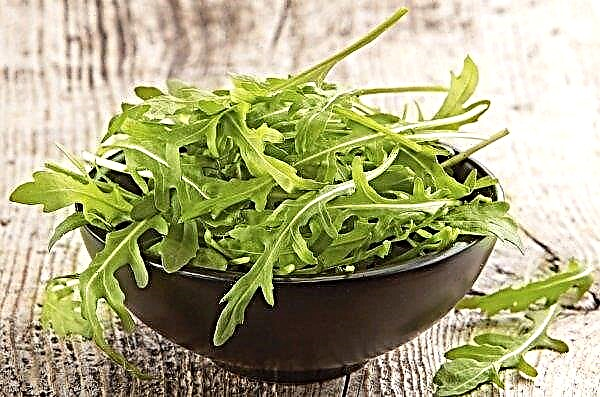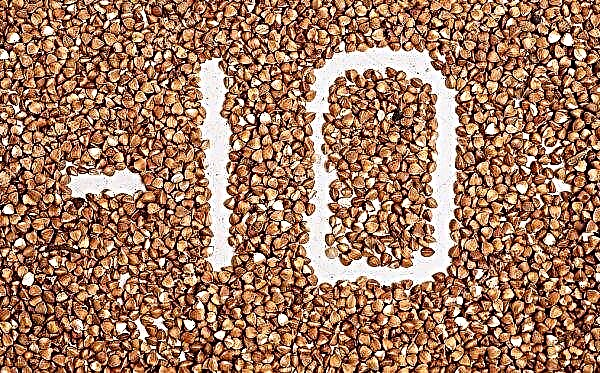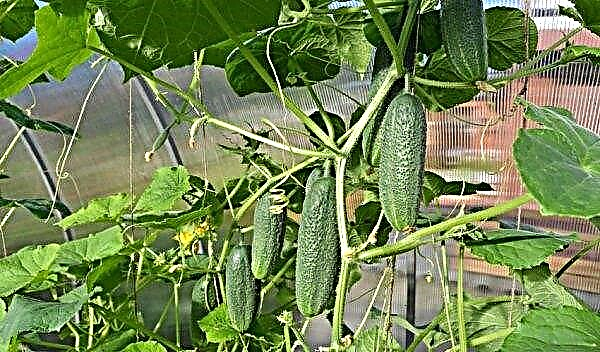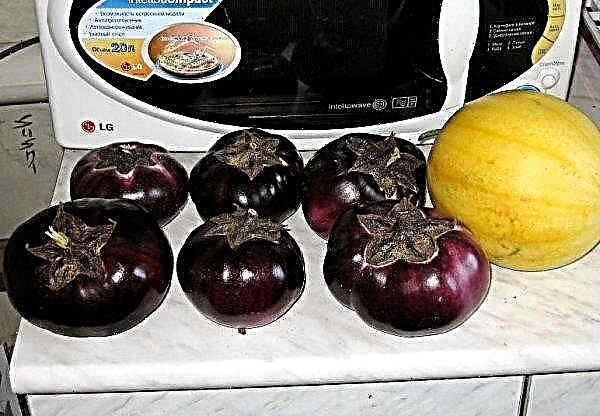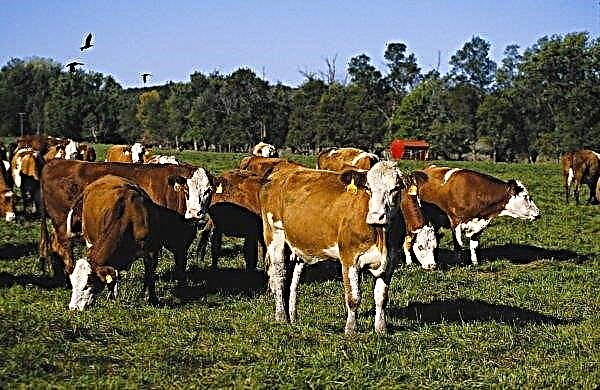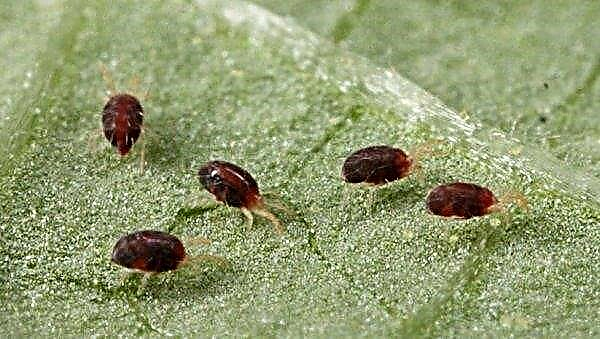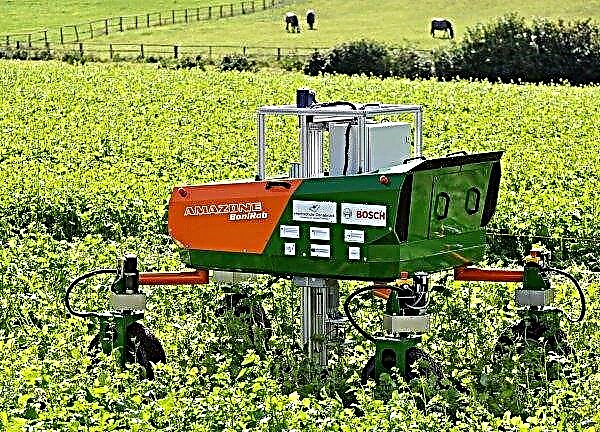A tomato plant capable of producing 2 crops per season, resistant to diseases and undemanding to care, cannot pass the attention of vegetable growers both on large farms and in home gardens. Read more about this tomato variety called Anyuta later in the article.
Characterization and description of the variety
This early tomato variety was bred in Russia in 2005 by breeders of the Semko Junior agricultural firm. At first it was intended for cultivation in the North Caucasus, but very quickly proved the ability to produce good crops in the central regions of Russia, Belarus and Ukraine.
Variety Anyuta F1, being a hybrid of one vegetative year, is not able to maintain its varietal characteristics in seeds from the mother plant. Relating to determinant species, i.e., limited in height growth, this plant does not grow above 0.65 m. At the same time, the bush is characterized by a small number of lateral shoots, representing a thick, stiff trunk, densely covered with green mass in the form of an average size of leaves.Did you know? The expression “red like a tomato” is not so relevant today, because there are varieties with green, yellow, white and even black color of fruits.

Yellow flowers are pollinated independently, forming an ovary on almost every flower. They are located on 5 hands, on average 6 fruits are formed. The plant has a root system that fully provides it with nutrition and good resistance to fruit ripening, the mass of each of which varies from 75 to 120 g. The color of ripe tomatoes is bright red. On average, from the bush you can collect from 2.2 to 2.8 kg of tomatoes. They have a good presentation, are suitable for fresh consumption, as well as for pickling and pickling, have good preservation and transportability.
Advantages and disadvantages of the variety
- Based on the foregoing, the advantages of the Anyuta variety should include:
- early fruit ripening;
- high taste;
- good presentation;
- the ability to produce 2 crops per season;
- resistance to diseases;
- universality of the use of fruits;
- good transportability;
- undemanding to frequent watering;
- compact bushes.
Optimal dates for growing Anyuta varieties
With the ability to produce two crops per season, the variety is first grown for seedlings in mid-March. As a result, already at the end of June, active fruiting of the culture is observed. The second time the seeds are sown on seedlings in early May, to get a crop in mid-August. At the same time, if the weather is quite warm, then the ripening of fruits can last until mid-September.
Growing Features
In addition to re-sowing seeds in a season, the cultivation of this variety differs little from the traditional methods inherent in tomato culture.

Growing seedlings
This process, which begins in mid-March and early May, proceeds as follows:
- First you need to prepare a substrate consisting of 2 parts of peat and 1 part of humus.
- Seeds for a quarter of a day are placed in a growth stimulator, after which they are dried and sent to the refrigerator for a day.
- In containers, which can be low boxes, seed plastic containers, glasses or washers from peat, the prepared substrate is poured.
- Seeds are deepened into the soil by 2 cm.
- After wetting, the seeds are covered with a substrate.
- The containers are covered with glass or a transparent film and placed in a place with good lighting and a temperature not lower than + 23 ° С.
- After the emergence of seedlings, the coating is removed from the containers, and complex fertilizers are applied to the soil.
- With the appearance of 3 leaves on seedlings in boxes or containers, it is dived (seedlings in peat pots or tablets do not require this).
- 14 days before planting seedlings under the open sky, it begins to harden. For this, the seedlings are taken outside for a short time, gradually increasing it. Immediately before planting seedlings in open ground, she needs to spend at least 24 hours in fresh air.
Did you know? Tomatoes belong to those rare vegetables, the thermal treatment of which does not worsen, but only enhances their beneficial qualities.
Preparation of land for planting seedlings
Anyuta tomato variety is demanding on good lighting. For its cultivation, the most illuminated area is allocated. Of great importance are the predecessors that previously grew in this place.
In no case should it be a nightshade crop in the form of:
- potatoes;
- pepper;
- physalis;
- eggplant.

Seedling Planting Technology
Start planting seedlings in open ground after the soil has steadily warmed up to a temperature of at least + 13 ° C. Since tomato Anyuta develops compact bushes, up to 7 bushes can be placed on 1 m². Seedlings by the time it is planted in open ground should reach a height of at least 0.25 m. Wells in previously prepared soil are dug to a depth a little greater than the height of peat cups or an earthen coma, if the seedlings are taken from plastic or clay containers. Wells are recommended to be staggered with a distance of up to 0.45 m between tomato bushes and up to 0.7 m between rows.
Check out other varieties of determinant tomatoes:
Crop care
With the exception of illumination, the variety Anyuta does not place high demands on either watering or fertilizing fertilizers. However, proper watering and timely and sufficient top dressing can increase the yield and quality of the fruit.
Watering and feeding
For the first time after planting seedlings in open ground, watering is carried out after 2 days. When watering, water must be poured directly under the bush, trying not to wet the foliage. Watering should be done with warm and well-maintained water in the evenings. Until the first ovaries appear, watering should not be carried out often. With the beginning of a set of tomatoes, watering masses are made more intense and smooth. Sudden breaks in moisture can provoke inhibition of the development of the ovaries and cracking of the fruit.

It is useful to feed seedlings with fertilizers already 10 days after planting in the ground. While the plants are gaining green mass, they mainly need nitrogen, which is a lot in organic fertilizer in the form of mullein. To do this, one part of it is diluted in 9 parts of water with the addition of 25 g of superphosphate to each bucket. At about a two-week interval, 2 more fertilizing should be carried out using half doses of mineral fertilizers that were applied when planting seedlings.
Important! To significantly increase the fruiting period of tomatoes, experts recommend feeding tomato bushes with milk with a small amount of iodine added to it.
Pasynkovka and formation of a bush
Since the varietal feature of Anyuta tomato is a compact bush with a slight formation of lateral shoots, pinching for it is not as relevant as for many other tomato varieties. Nevertheless, stepchildren that adversely affect the yield of the bush should be removed on Anyuta. A bonus of this manipulation on this ripening early tomato variety is the ability to plant the removed stepsons into the ground, since they manage to bring an additional crop.
The two-root method of growing tomatoes has become very popular. To do this, tomato bushes are planted close to each other in advance. Then, long shallow longitudinal sections are made on the trunks of both bushes, connect them to each other and tie tomato stems. After trunks grow together at the cut sites, the strapping is removed, and the least developed of the two upper parts of the fused plants is removed. As a result, one bush with two root systems is obtained, which greatly increases its productivity.
Video: Tinging Tomatoes
Soil cultivation and weeding
Weed weeding, which should be done at least once every 2 weeks, is usually combined with loosening, which improves oxygen access to the root system. In addition, in order to avoid the formation of a crust on the ground, which makes it difficult for the roots to breathe, cultivation must be done after every rain and watering. Hilling is very important for the plant, which can also be combined with cultivation. Hilling, in addition to creating optimal temperature and humidity conditions in the root system, promotes the formation of new roots on the tomato stem.
Diseases and pests
For all its resistance to most tomato diseases, Anyuta tomatoes are not completely immune from diseases and pests. To reduce this risk, tomato should not be planted in the immediate vicinity of other nightshade crops. For preventive purposes, it is useful to treat the bushes several times a season with copper sulfate.
If the tomato plant was nevertheless affected by late blight, then diseased parts should be removed from it, and the rest of the bush should be sprayed with Bordeaux liquid or treated with Fitosporin or Barrier preparations.Important! For the prevention of diseases, tomato plants should not be planted in the same place for more than 3 years.
The plant is saved from the pest in the form of whiteflies by means of the Fitoverm, which spray the lower parts of the leaves, where the caterpillars accumulate. Spider mites are fought with the help of Karbofos and Antiklesch, while Prestige and Iskra destroy the larvae of the Colorado potato beetle. The beetle itself most often has to be collected manually.
Features of harvesting and storage of crops
It is best to harvest tomato fruits in the morning when they are as elastic as possible. At the same time, their mechanical damage should be avoided. The degree of maturity of the harvested tomatoes depends on their purpose. For quick use as salads, fully ripened fruits are harvested. For longer storage, brown tomatoes are picked in order to ripen them later. This, among other things, promotes faster growth and ripening of the fruits remaining on the bushes.
Torn tomatoes with the stem are placed in a wooden or cardboard container in 3 rows, where they ripen for 3-5 days. The presence or absence of light does not play a role in this, but the temperature in the room should not be lower than + 20 ° C.

The presence of red tomatoes contributes to a faster ripening of the rest, so if a longer shelf life of tomatoes is expected, ripened red fruits must be removed immediately from the storage location.
Tomatoes of Anyuta variety can be stored fresh for up to 1 month. It should be borne in mind that during storage, the fruits use sugar, which is already not enough in this variety, as in other tomatoes of early ripening.
In just over 10 years, Anyuta tomatoes have been “prescribed” on many vegetable farms and in private households. Their early maturity, the ability to produce 2 crops per season, resistance to diseases and high taste conditions fully comply with the requirements of modern vegetable growers.
Network user reviews
ADVANTAGES: very early and tasty
DISADVANTAGES: hybrid, expensive seeds
This is a variety that is needed by everyone who wants to get an early harvest (from germination to the beginning of fruiting 75-80 days). Since the plant is stunted, even those who do not have a greenhouse (like me) can plant seedlings under arches with lutrasil. Seeds germinate very well. Sowing them in early March, we get ripe fruits in June, this is without a greenhouse. And if you seedlings accidentally died, then "Anyuta" sown later than the rest will not let you remain without a crop. There are a lot of fruits on each bush, they are small, with 5-6 fruits, with brushes. Tomatoes are sweet, with a bright tomato flavor. Very beautiful, red, one to one. The bush simultaneously gives up the crop and dies. They say that you can plant seedlings later to get a crop of this variety closer to autumn. But what attracts me to him is precisely the opportunity to have a super-early harvest. I haven’t noticed it in diseases, maybe because I have time to bear fruit to cold mists. A wonderful variety for both an early harvest in the south and a short summer in the north.



